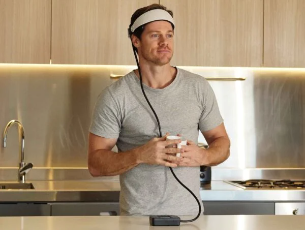Sports science is a rapidly developing field as professional athletes (and the franchises and brands who employ them) worth millions of dollars try to find ways to maximize their physical potential. Take a look at the contrast from the 1990s, when hockey stars like Mario Lemieux were notorious for smoking more than a pack of cigarettes every day, to the modern era when most top athletes take immaculate care of themselves, always looking for a new way to improve their performance.
One such technique that’s gained popularity rapidly in the last decade is forms of cold water therapy, whether it’s something anyone can do at home like ice water baths, or more expensive options like cryotherapy.While it’s far from settled science yet—the medical community can take decades to reach a consensus on just how effective a novel treatment is—more and more athletes of all talent levels are turning to ice baths to help recover from their workouts: even those at the highest levels of their respective sports.
UFC Champion Weili Zhang, who is set to fight in Boston at UFC 292 next month, is a big believer in cold plunges. Zhang said, "I think ice baths are very important for recovery. After a fight, I feel like my body is very tired and sore. The ice bath helps to reduce the inflammation and soreness, and it also helps me to feel more refreshed and ready to train." If you are looking to support Zhang next month at UFC 292 Boston make sure to check out a WynnBET Massachusetts promo code. As Zhang said, the basic idea behind cold therapies is that exposure to cold temperatures helps your body recover from workouts faster: vigorous exercise creates microscopic tears in your muscles, and treatments like ice baths kick start the healing process that makes muscles grow back bigger and stronger.
When you’re exposed to cold temperatures (relatively speaking, as a bath that is 55 degrees Fahrenheit feels much colder than a 55 degree air temperature is), your body pulls blood—and with it, heat—from your extremities like arms and legs to your core to keep your vital organs warm. This reduces inflammation in the moment, helping you recover from post-workout soreness, and once you’re no longer submersed, the rush of nutrient-rich blood back to your muscles helps continue the healing process.
Other famous athletes who rely on ice baths and cryotherapy are tennis legend Serena Williams and gold medal gymnast Simone Biles, two of the greatest athletes ever in their respective sports.Williams uses ice baths to recover from both routine workouts and injuries: after suffering a torn hamstring during the 2021 Wimbledon Championship that kept her off the court for the better part of a year, Williams (who is an avid social media user) continued to track her recovery process using apps like Instagram, talking about the importance of ice baths to her workout process.
Indeed, Williams has fine tuned her recovery process so much that she has a customized portable ice bath that she brings along when on the road.
Biles, on the other hand, took some time to get over her (literal) cold feet and adopt ice baths as a regular part of her routine.
Ahead of the 2016 Summer Olympics in Rio De Janeiro, Biles told Nick McCarvel of USA Gymnastics that she only used ice baths if she had to target a specific injury. “I avoid it,” Biles said. “If I have to put my foot in for an ice bath, fine. Up to my belly button? No way!”
Since then, however, she’s changed her tune, saying in 2022 that she used regular ice massages—another form of cryotherapy—to recover from her workouts.















